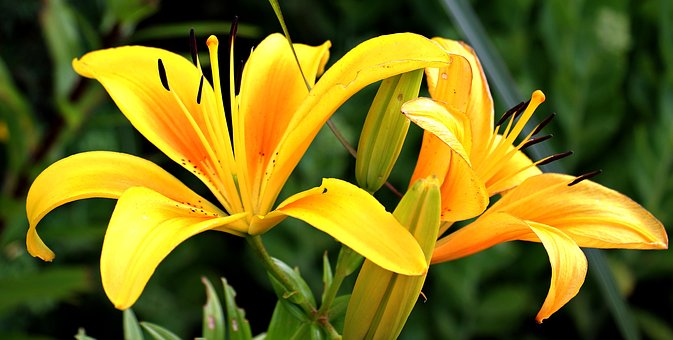All 2nd Grade Science Resources
Example Questions
Example Question #1 : Investigate Materials And Observable Properties
Observable properties include measurements like height, weight, temperature, and the volume of an object.
False
True
False
This is a false statement. The properties listed in the question do help scientists understand materials, and those characteristics describe them well, but they are not observable. Observable properties are things we can use our five senses to determine, the measurable properties in the question need a tool like a thermometer or a ruler to determine.
Example Question #13 : Physical Science
Diana found a flower in her backyard and wants to investigate what it is. What flower is Diana describing with the observable properties data table below?

Lily

Daisy

Cactus

Lilac

Lilac

The flower that Diana likely found in her backyard is a lilac. The flower she describes using observable properties matches the image of the flower. They are both purple and green, soft, smooth, and would not bounce. Observable properties can be identified using our five senses and what Diana described appears to be lilacs.
Example Question #161 : 2nd Grade Science
Kelly is trying to decide which item number is most likely describing the seashell below based on its observable properties. Looking at the data table, which item is the best match?


Item 2
Item 4
Item 3
Item 1
Item 1
The item that is most likely describing the seashell is "Item 1". A seashell has all of the matching observable properties, so it could be classified in the same category. A seashell is hard, does not bounce, is irregularly shaped, tan, and would feel rough to the touch. None of the other items would be a match.
Example Question #162 : 2nd Grade Science
Ralph made a table with the descriptions of four mystery items, and his friend Steven had to guess which item was describing a teddy bear's observable property. Which item should Steven choose as the teddy bear's description?


Item 2
Item 1
Item 3
Item 4
Item 4
Steven should guess "Item 4" is a match to his teddy bear because they share the same observable properties. The teddy bear is brown, soft, smooth, would not bounce, and is an irregular shape. The other items could not be classified as a teddy bear.
Example Question #163 : 2nd Grade Science
Which answer choice could be classified as "Item 2"?






"Item 2" is described as hard, not bouncy, square, green, and smooth to the touch. When reviewing the answer choices, they are all green but have other observable properties that would not allow them to be classified as "Item 2". The tennis ball is round, the block is rough on top and rectangular, and the leaves are irregular shaped. The only answer choice that matches the characteristics is the cube.
Example Question #4 : Classify Materials By Observable Properties

Observable properties classify all of the items listed. What observable property are all of the items in "Category 3" sorted by?
Hardness
Shape
Texture
Color
Color
Observable properties are characteristics of an object or material that can be gathered using the five senses. When looking through each category, there is a common property that groups the items. In "Category 3," all of the items are brown, so they are classified by color.
Example Question #4 : Classify Materials By Observable Properties
Observable properties classify all of the items listed. What observable property are all of the items in "Category 1" sorted by?

Shape
Texture
Color
Hardness
Shape
Observable properties are characteristics of an object or material that can be gathered using the five senses. When looking through each category, there is a common property that groups the items. In "Category 1," all of the items are rectangular, so they are classified by shape.
Example Question #11 : Physical Science
Observable properties classify all of the items listed. What observable property are all of the items in "Category 2" sorted by?

Shape
Color
Hardness
Texture
Shape
Observable properties are characteristics of an object or material that can be gathered using the five senses. When looking through each category, there is a common property that groups the items. In "Category 2," all of the items are round, so they are classified by shape.
Example Question #1 : Classify Materials By Observable Properties
Which answer choice could be classified as "Item 4"?






When looking at items or materials, we can classify them based on their observable properties. If we look at the different descriptions of all four items and then think about a tennis ball, some similarities can be found between item 4 and a tennis ball. They can be described with the same properties, so they fall into the same category.
Example Question #2 : Classify Materials By Observable Properties
Ivy is trying to decide which item is most like a fuzzy refrigerator magnet based on its properties. Looking at the data table, which item is the best match?

Item 1
None of the items
Item 2
Item 3
Item 3
When looking at items or materials, we can classify them based on their observable properties. If we look at the different descriptions of all three items and then think about a baseball, some similarities can be found between item 2 and a baseball. They can be described with the same properties, so they fall into the same category.
All 2nd Grade Science Resources




